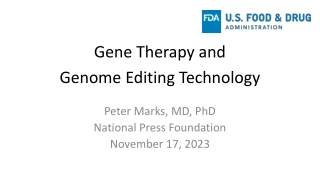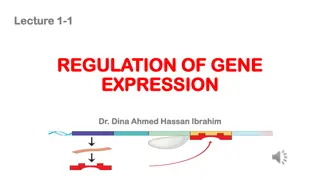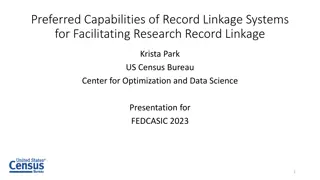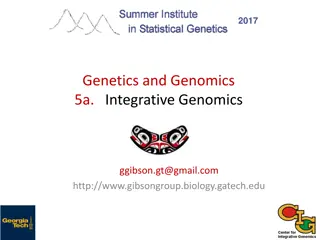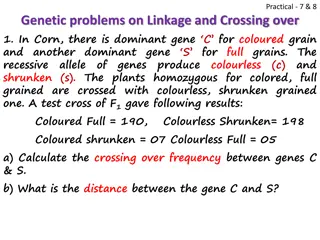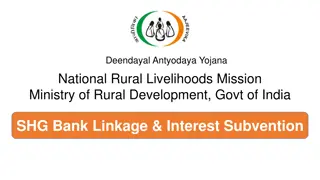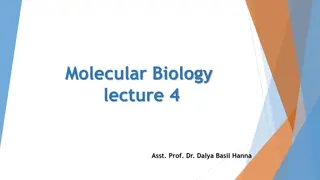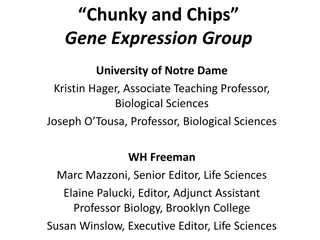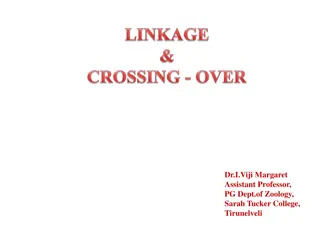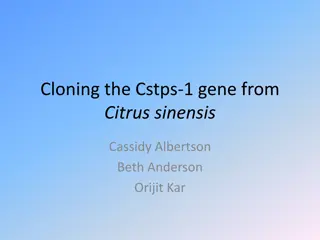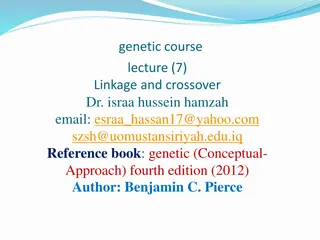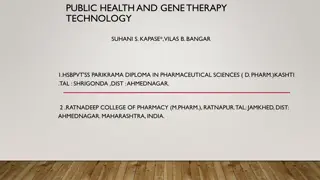Hereditary Units and Gene Linkage
Discover the fascinating world of hereditary units and gene linkage carried by chromosomes in individuals. Explore how genes for different characters are situated on the same or different chromosomes, impacting inheritance patterns. Learn about linkage, distance between genes, and the concept of crossing-over. Delve into classic experiments in Drosophila and silkworms that shed light on genetic mechanisms.
Download Presentation

Please find below an Image/Link to download the presentation.
The content on the website is provided AS IS for your information and personal use only. It may not be sold, licensed, or shared on other websites without obtaining consent from the author.If you encounter any issues during the download, it is possible that the publisher has removed the file from their server.
You are allowed to download the files provided on this website for personal or commercial use, subject to the condition that they are used lawfully. All files are the property of their respective owners.
The content on the website is provided AS IS for your information and personal use only. It may not be sold, licensed, or shared on other websites without obtaining consent from the author.
E N D
Presentation Transcript
Dr. Aqeel M. Ali 2019 2019
Hereditary units ( gene) carried by chromosome Individual has many genes for determination different characters . 1 chromosome has many genes . Genes for different characters : either situated . In the same chromosome or . In different chromosomes When genes in different chromosomes characters : either . appear together or . Appear apart . ( depending on chance, according to Mendel s law ) 2025 18 2
When genes: 1-situated in same . Chrom. 2-fairly close to each 3-inherited together LINKAGE : Coexistance of two or more genes in the same chromosome . . 2025 18 3
2025 18 4
P1 : AB/AB P1 gametes : (AB) F1 : ab/ab (ab) AB/ab Test cross : Gametes : (AB) (ab) (ab) AB/ab ab/ab F2 : AB/ab : ab/ab 1 : 1. 2025 18 5
1-the linked genes situated in same chrom. & remain bounded by chromosomal material ( can t separated during process of inheritance ) 2-the genes are arranged in linear fashion in the chromosome . 3-distance between linked genes determines the strength of linkage ( closely located genes show strong linkage ) . (widely located genes show weak linkage ) 2025 18 6
1- complete linkage * in 2 or moregenerations * Regular fashion * i.e. bent wings (bt) & sheven bristles (svn) ch.4 in drosophila melanogaster 2- in complete linkage The linked genes do not always stay together because homologous non-sister chromatids may exchange segments of varying length with one another during meiotic prophase. This sort of exchange of chromosomal segments in between homologous chromosomes is known as crossing over 2025 18 7
In most of the organisms crossing-over takes place both in males and females. But in male Drosophila and female silkworm, crossing- over takes place eithervery rarelyor not at all. This becomes clear byMorgan s(1957) experimental results from Drosophila. In 1919, T.H. Morgan mated gray bodied and vestigial winged(b+vg/b+vg) fruit flies with black bodies and normal long wings (bvg+/bvg+). 2025 18 8
2025 18 9
F1 males (b+vg/bvg+), backcrossed (test crossed) to double recessive females (bvg/bvg or black vestigial). only two types of progeny (gray bodies and vestigial wings, b+vg/bvg ) and (black bodies and normal wings, bvg+/bvg) instead of four types of phenotypes . Use of the testcross is very important. Because one parent (the tester) contributes gametes carrying only recessive alleles, the phenotypes of the offspring represent the gametic contribution of the other double heterozygote parent. So the genetical analyst can concentrate on one meiosis and forget the other. This is in contrast to the situation in an F1 where there are two sets of meiotic divisions to consider one for the F1 male parental gametesand one forthe F1 female. 2025 18 10
1- Gray, Vestigial; b+vg/bvg = 41.5% 83% parental combination 2- Black, Long; bvg+/bvg = 41.5% showing linkage 3- Gray, Long ; b+vg+/bvg = 8.5% 17% recombinant 4- Black, Vestigial; bvg/bvg = 8.5% crossing over 2025 18 11
Morgans classical cross in Drosophila between gray, vestigial (b+vg/b+vg) and black, normal or long (bvg+/bvg+) were testcrossed to double-recessive (bvg/bvg) males, all four types of progeny were obtained in following ratio, showing the occurrence of crossing-over Parents : Gray, Vestigial b+vg/b+vg bvg+/bvg+ Gametes : (b+vg) (bvg+) F1 : b+vg/bvg+ Gray, Long Black, Long Test cross : F1 Female Gray, Long Male Black, Vestigial b+vg/bvg+ bvg/bvg (b+vg) (bvg+) = Non-cross overs (bvg) (b+vg+) (bvg) = Recombinants Game tes : 2025 18 12
2025 18 13
Drosophila 4 pairs = 4 linkage group Man 23 pairs = 23 linkage group Corn 10 pairs = 10 linkage group 2025 18 14
1. Female human = 22 pairs autosomes + 1 pairof : X chromosomes = 22 autosomal linkagegroups + 1 X chromosomal linkage group = 23 linkage groups. 2-Male human : = 22 pairs of autosomes + X + Y chromosomes = 22autosomal linkage group + 1 X linkage group + 1 Y linkage group = 24 linkagegroups. . SIGNIFICANCE OF LINKAGE One of thegreatsignificance forthe living organisms that reduces the possibility of variability in gametes unless crossing overoccurs 2025 18 15
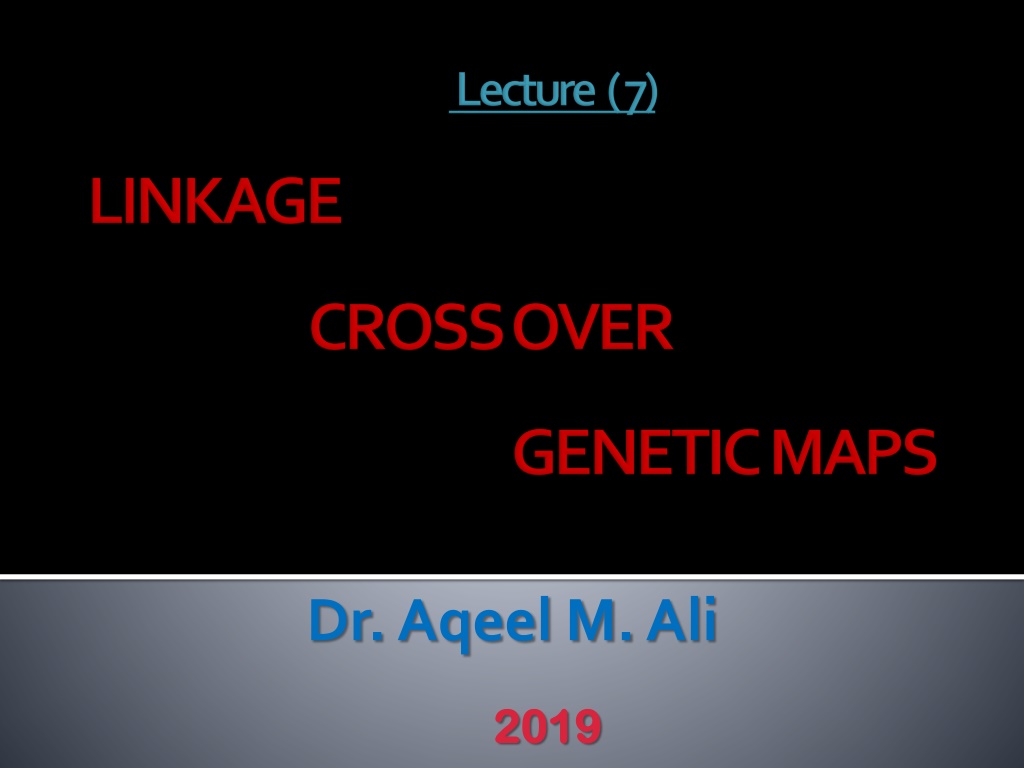
 undefined
undefined




